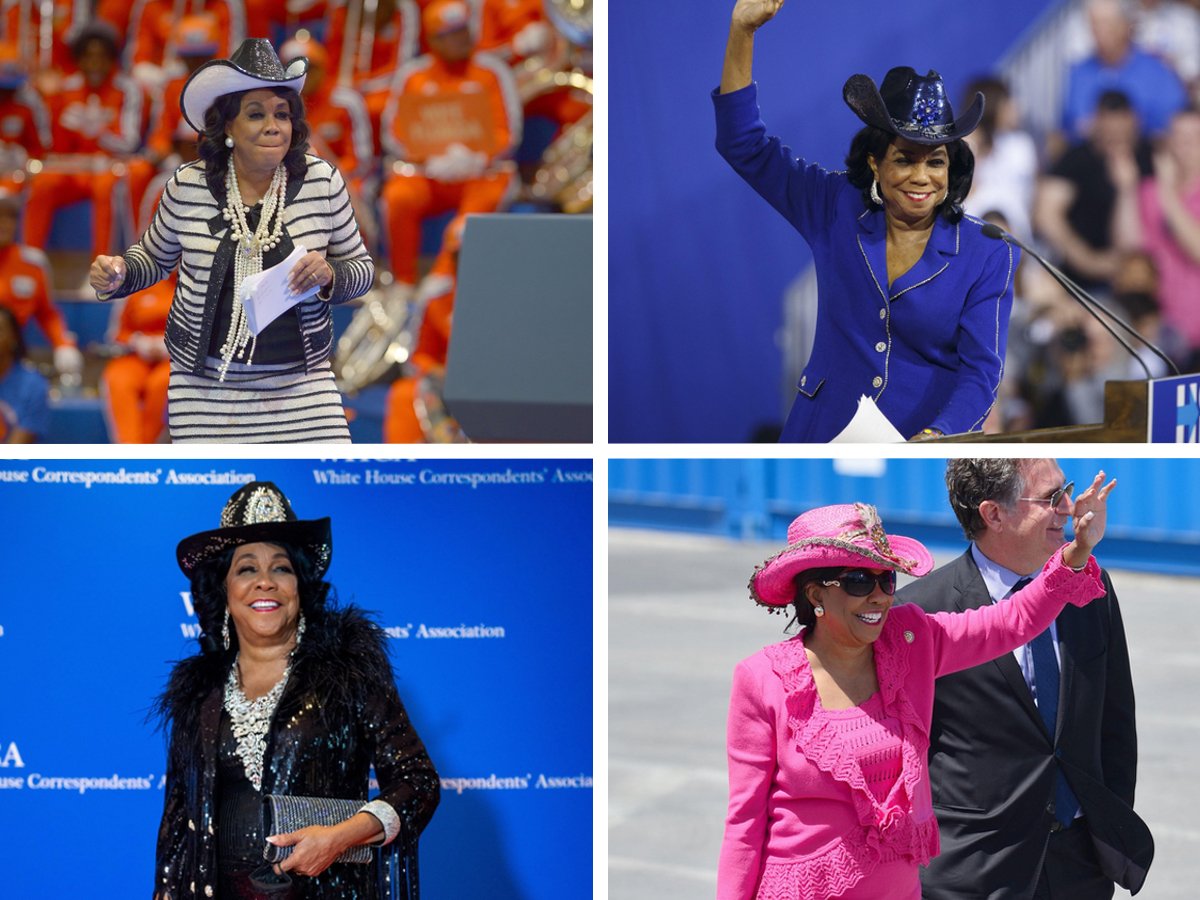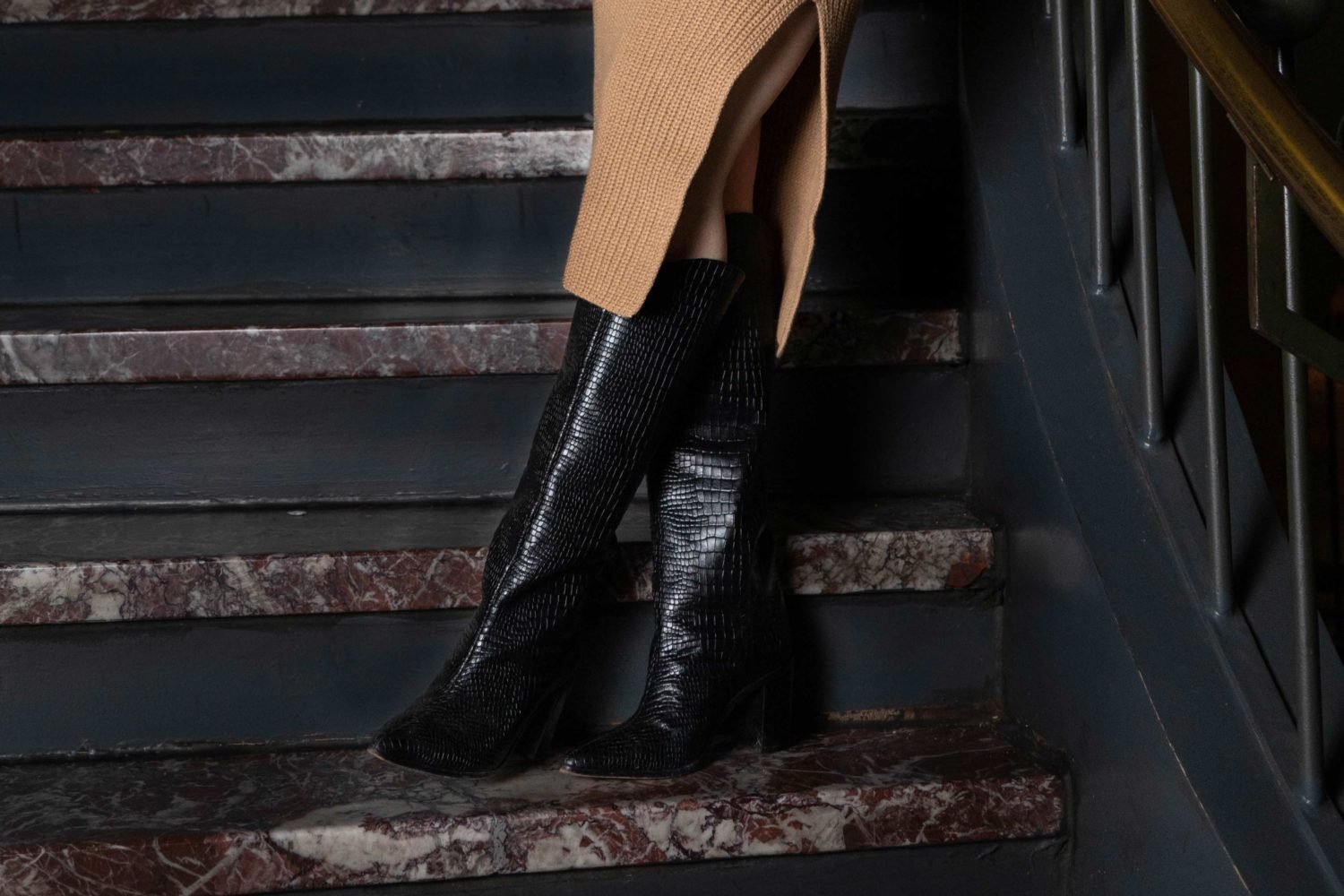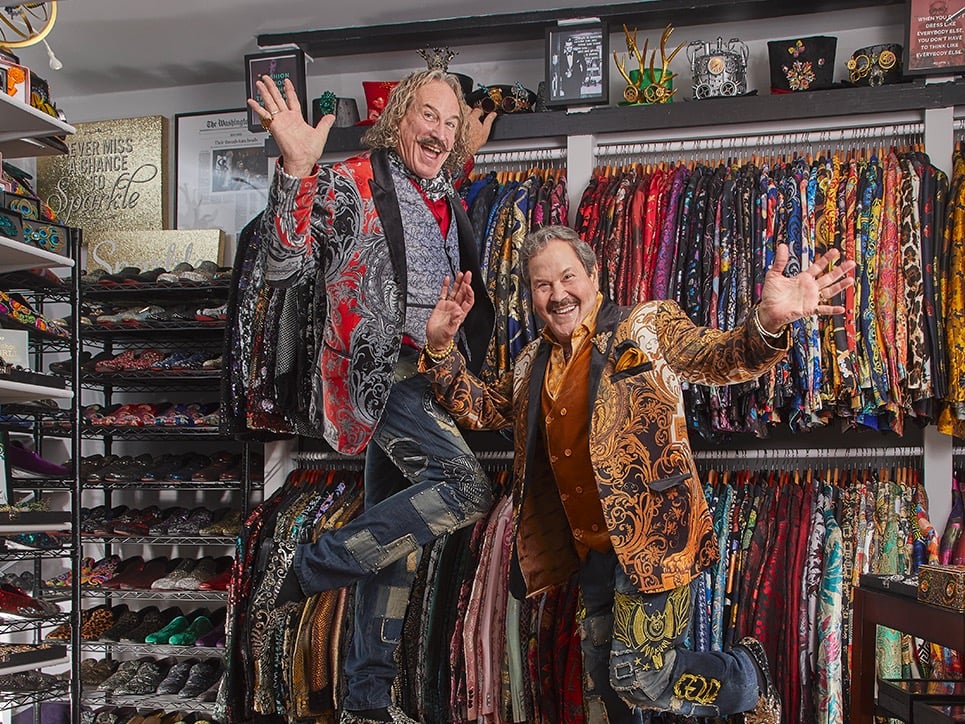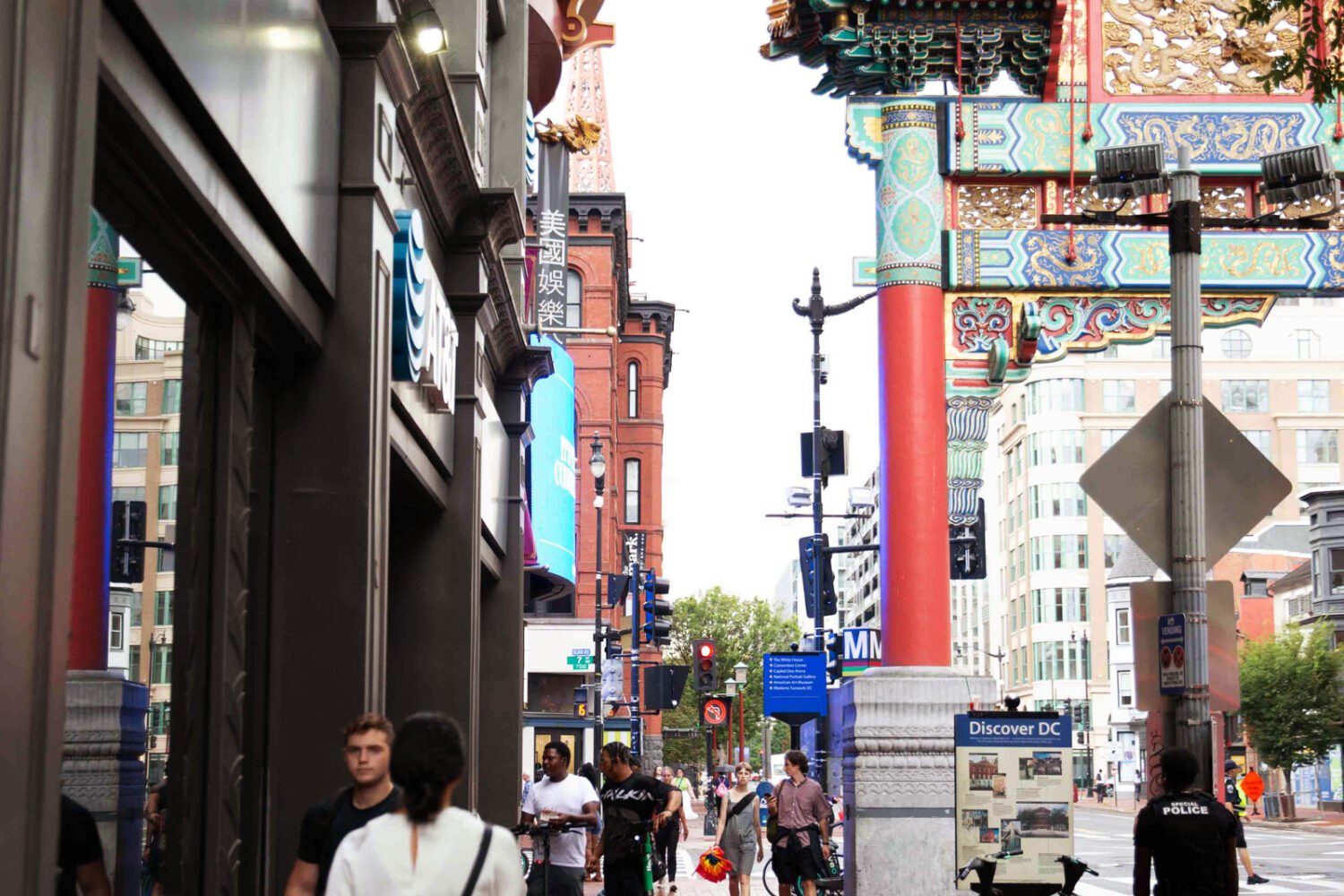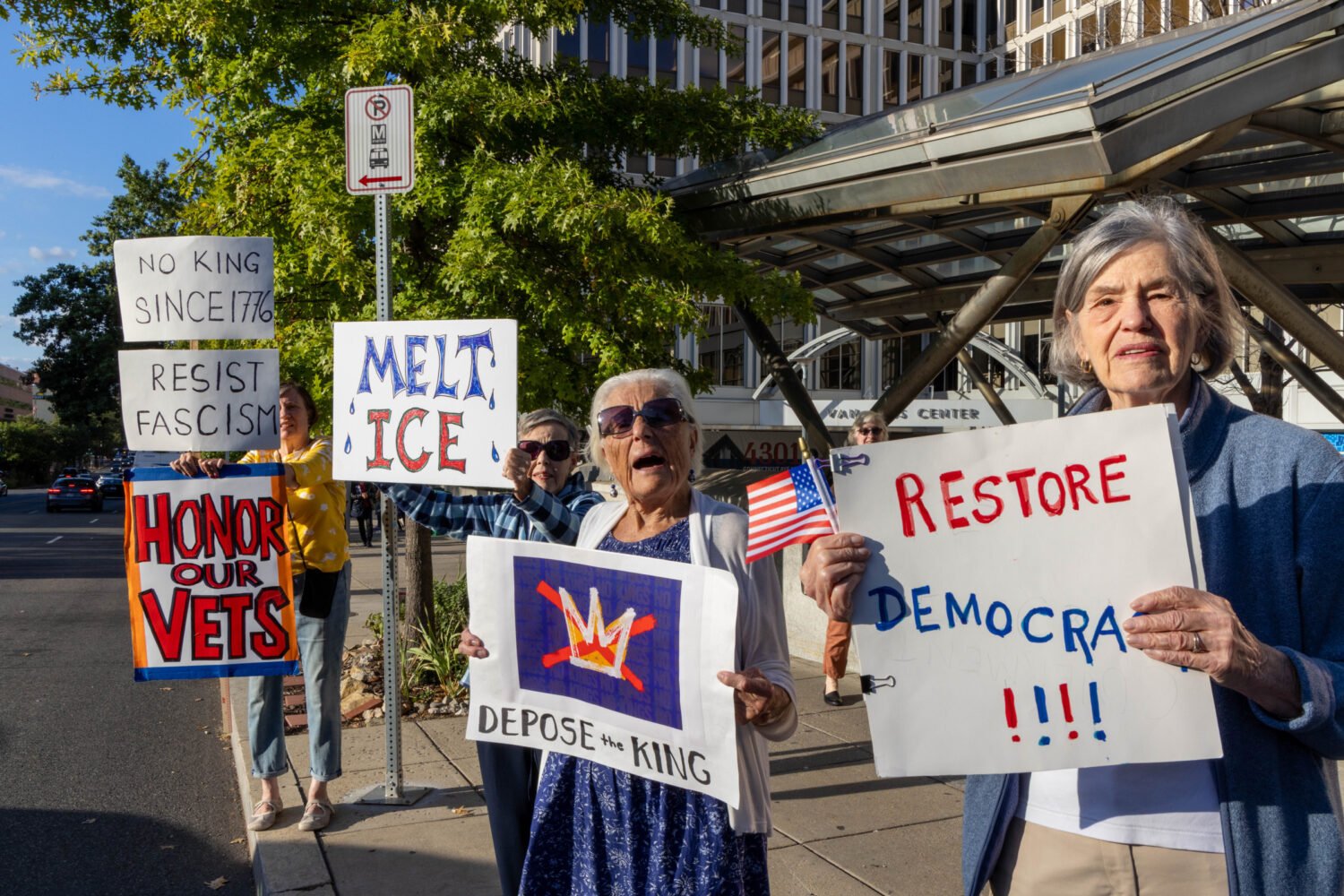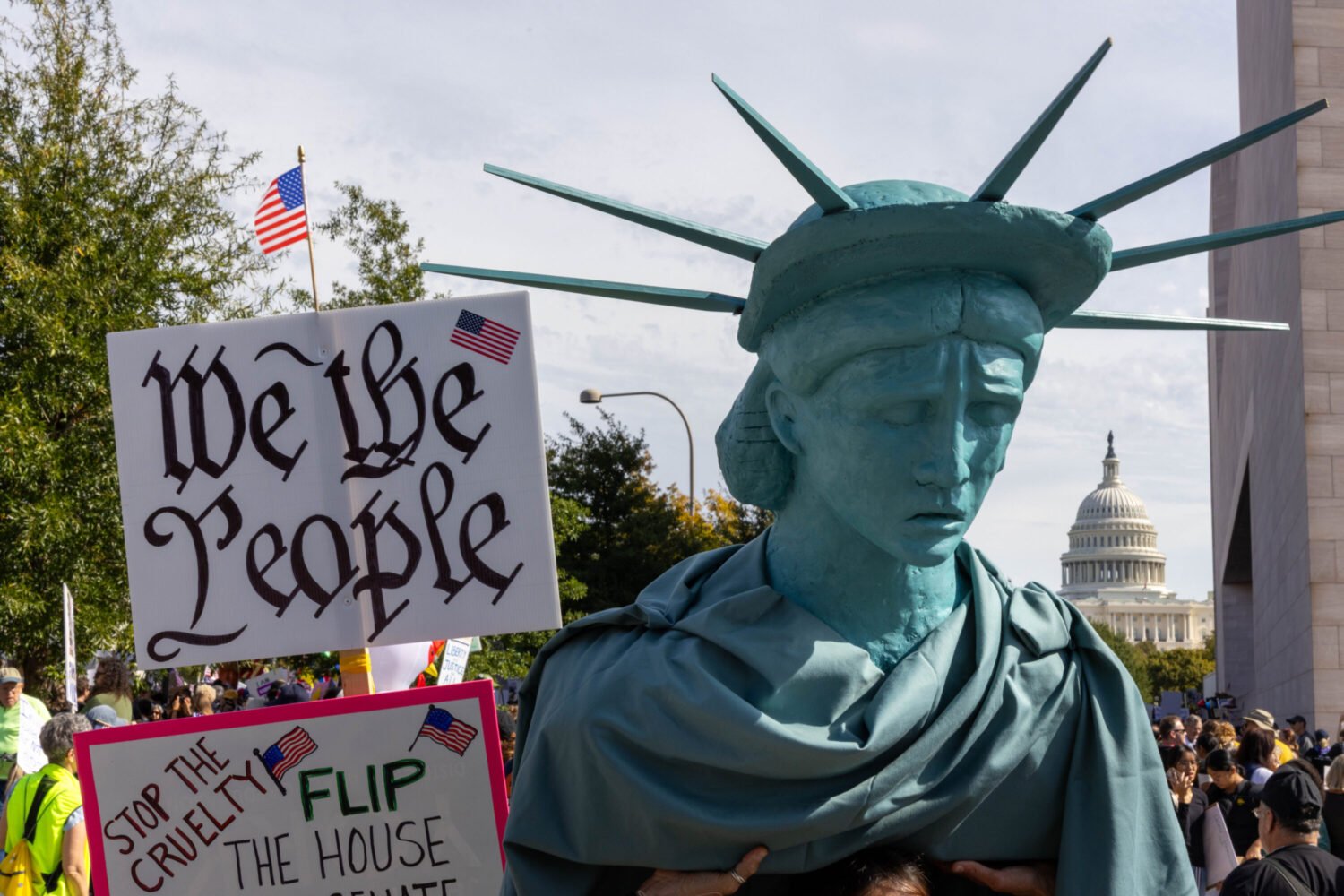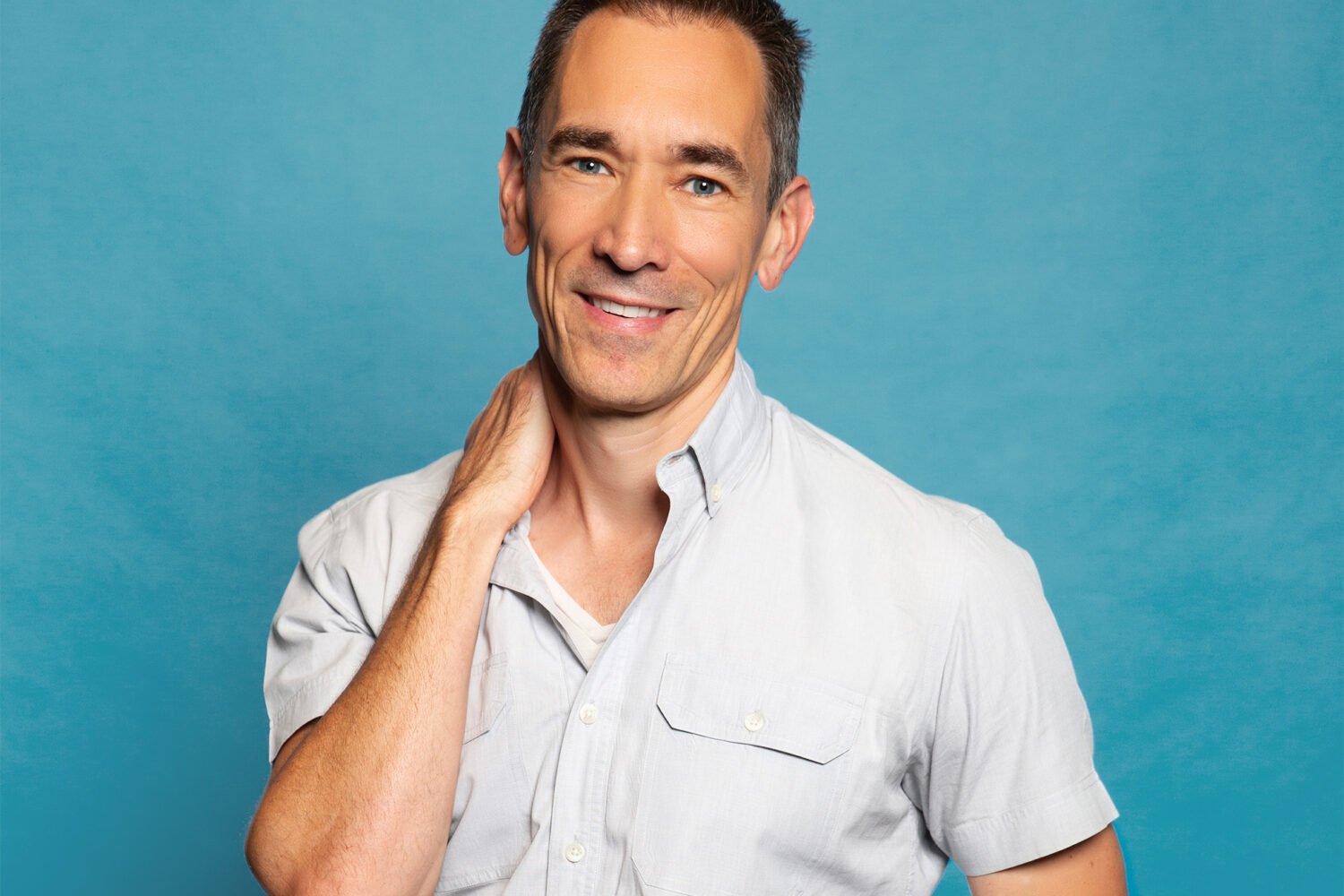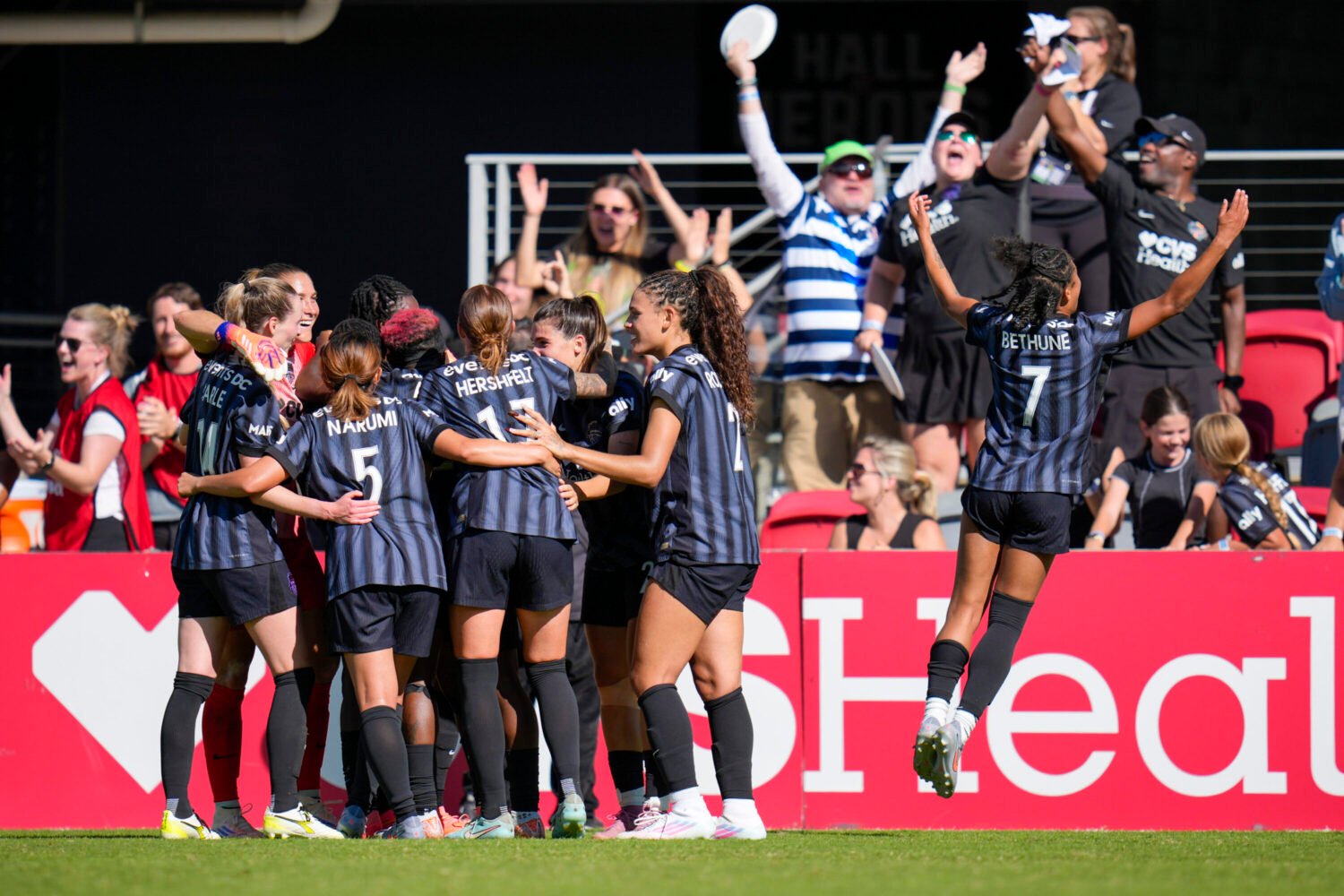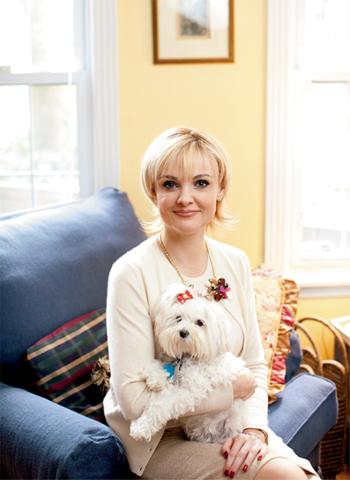
Andrea Rodgers sits on an exam table and regards herself in a hand mirror. Turning slightly into profile, she pokes her index finger around the contours of her eye socket, raising her brows in great surprise or furrowing them in mock distress. She moves along the perimeter of her face, pushing and prodding until she’s completed her grand tour.
Looking into the mirror, she smiles and says, “I’ve always been a cheeky person.”
For Rodgers, 38, this isn’t always a positive attribute. She has come to Georgetown’s Hela Spa to, quite literally, save face. As a business consultant (who counts Hela as one of her clients), the personality behind the e-magazine Ask Miss A, and, as she likes to claim, a self-made socialite, Rodgers is out in the public’s coolly appraising eye almost every night.
“I’m being photographed all the time,” Rodgers says, placing the hand mirror in her lap and revealing a Botox logo on the back. “So I have to look my best because those photos stick around.”
For Rodgers—whose upcoming week begins with an on-camera interview for Politico and ends with an appearance at the annual Blondes vs. Brunettes football game—looking her best doesn’t include having a face with crow’s-feet, age spots, or lines that run from the corners of her nostrils down to the sides of her mouth.
“Those are your nasal labial folds,” says Melanie Erb, a nurse practitioner who previously worked in the department of plastic and reconstructive surgery at Johns Hopkins Hospital. The ruffles on Erb’s taupe taffeta blouse stick out of her white lab coat, giving the appearance of clinical formal wear.
“Well,” says Rodgers, “they are really bothering me.”
Erb snaps on a pair of rubber gloves and takes a closer look. She plants her thumbs on the apple of the cheeks and tugs at the skin around the cheekbone. Erb delivers her verdict: “Let’s do some filler. I think you’ll look more refreshed. Especially when you smile.”
On this Saturday, Rodgers will receive two syringes of the dermal filler Juvéderm. (Restylane is another frequently used filler.) But nasolabial lines aren’t the only thing bothering Rodgers. Erb also injects a total of 50 units of Botox along the lines in Rodgers’s forehead, around the outer corners of her eyes, and into the parallel furrows between her brows—known in the beauty biz as “the elevens.”
The cost for this ephemeral clock stopping—the effects of fillers last 6 to 18 months, Botox 4 to 6 months—will come to about $2,000. That’s not counting the $120 Rodgers drops on a starter kit of Latisse, the Brooke Shields–endorsed product that makes eyelashes grow like weeds.
“It’s the smartest way for women to spend money,” says Erb. “We are career women; we can afford to look our best.”
Erb first numbs the inside of Rodgers’s upper lip, as if she’s about to give her a root canal.
“Being beautiful is not for wimps,” Rodgers says, clutching the sides of the table in a death grip.
“It’s a full-time job,” adds Erb, reaching for another needle.
To some people, the idea of spending so much time fighting time is eyebrow-raising. According to the American Society for Aesthetic Plastic Surgery, Botox injections were the most frequently performed non-surgical procedure in 2008, with more than 2.2 million administered, followed by dermal fillers.
Wallis Simpson famously said a woman could never be too rich or too thin. But what about too preserved? On a continuum of beauty care that ranges from a simple swipe of ChapStick to Nicole Kidman’s oddly augmented pillow lips, how much maintenance is too much?
“Do you know what costs a lot?” sighs DC dermatologist Tina Alster when asked to reveal the most expensive cosmetic procedure she does. “Maintenance costs a lot.”
Alster, whom Maureen Dowd once dubbed the Queen of Lasers, says her highest-maintenance patients are the ones who request more than what they clinically need: “They come to me saying they need the latest fillers and the greatest lasers. They drive themselves and everyone around them crazy because they really don’t want to age at all. They want to beat the clock—and that’s a bit unrealistic.”
So is thinking that eyebrows can remain in a fixed position without attracting a bit of skepticism.
“There’s nothing worse than when people mistake your Botox or brow lift for utter, constant surprise,” says fashion publicist Barbara Martin. “I think the fatal flaw is when DC women think it’s Miami and try to take 20 years off their face in one fell swoop.”
Rachel Weingarten, a Brooklyn-based image consultant who works with “high-wealth individuals” in both New York and Washington, says that when she rides the train between those cities she notices two kinds of faces: “The aesthetic in DC is very Junior-League-with-a-perpetually-unfurrowed-brow. It’s a moneyed look that’s worn more as a status symbol.”
New York City women are more trend-conscious and, like their counterparts in Los Angeles, more youth-obsessed. “They all want to look like supermodels,” says Weingarten. New York women as young as 22 are getting Botox, she says, and she’s convinced that 20-year-old singer Taylor Swift is doing something to her face: “I think it’ll come out that she’s much older than she claims.”
Even if women in Washington are more judicious when it comes to how they look, the time they spend trying to look as though they haven’t spent any time at all on their appearance—and the extremes to which they’ll go in the name of self-preservation—can be significant.
“I tried electric-shock therapy on the backs of my legs for cellulite,” says a DC woman in her mid-forties. “I would lie down on this bed and they would hook electrodes to different places on my body and send electrical currents through my upper legs. It was not a pleasant experience. I was always afraid that some wiring would screw up and really hurt me.”
Fear doesn’t seem an issue with Andrea Rodgers. Two days after receiving Botox, which won’t take hold for another few days, and Juvéderm, which feels like tiny grubs under her skin, she is in Old Town’s Back to Health Center, an alternative-medicine facility that offers acupuncture and chiropractic. She’s about to receive her first IPL treatment for the dark circles under her eyes—even though she’s not exactly sure what IPL, or intense pulsed light, involves.
“I’ll Google it when I get home,” she says. “It’s not that I’m a trusting person. It’s that I’m a vain person.”
Rodgers is more than she first appears. With her halo of blond hair, shiny Cupid’s-bow lips, and pinup girl’s body, she may look like a computer-generated avatar of Marilyn Monroe, but behind her veneered shell, Rodgers is a funny and warm woman. For all her artifice, she is, paradoxically, genuine. But after learning that Back to Health’s IPL machine is on the fritz and that a staff member is warming up a replacement, having some suspicion might serve Rodgers a lot better.
Lying on a padded table, Rodgers admits that she’d probably put leeches on her eyes if she thought they’d do something rejuvenating. Lucky for her, Tysha Talavera, the massage therapist who’s administering the IPL treatment, instead places two adhesive white patches, goggle-like, over Rodgers’s eyes. Dressed in black leggings, a long-sleeved black tee, and a white down vest, Rodgers looks ready to hit the slopes in Gstaad.
R.N. Mildred Duhaney, Back to Health’s master aesthetician and IPL specialist, joins Talavera. “It’s now optional for us to look our age,” Duhaney says.
In IPL, Tina Alster explains, an intense pulsed light is used to heat up and ultimately damage the inside of the blood vessels under the eyes, which cause the darker pigmentation. The body eventually clears away the injured debris.
The device resembles a hand-held price scanner. “Ready?” asks Talavera.
When she’s hit with a light that’s as bright as the surface of the sun, Rodgers jumps like a cat. “I saw fire!” she says. “It didn’t hurt. It was just red and then orange and then—wow.”
She collects herself and asks Talavera, “When you’re finished with this, do you think we have time to wax my eyebrows?”
Rodgers wasn’t always this perfect. Born in Rotterdam to a Dutch mother and an American father who was an Air Force physician, she moved with her family to Shelby, North Carolina, where she lived what she calls a Green Acres lifestyle: “My mother had the only espresso machine in the Charlotte area.”
When she was seven, Rodgers was in a car accident that put her in the hospital for six weeks and left her face severely injured. She underwent reconstructive surgery on her nose and lips. She grew up feeling like an ugly duckling.
“I know the value of what plastic surgeons can do for people who have been disfigured,” she says. Turning to look in a mirror, she brightens: “I always thought, ‘I’m going to be pretty one day.’ And then it came true.”
She recounts this bit of autobiography while sitting in the pink-and-brown Ted Gibson salon. It’s the final leg on her weeklong tour of beauty, which has all led up to today’s event: the Blondes vs. Brunettes football game, a charity drive that Rodgers helped found in 2005 to raise money for the Alzheimer’s Association.
Today Rodgers is sporting a bubblegum-pink T-shirt, the team color of the Blondes. Her dog, Scarlett—a fluffy white Maltese sitting patiently in her lap—is dressed in a matching pink polo shirt and tiny pink-pearl necklace. A few days before, Rodgers and Scarlett walked the runway at the Torpedo Factory Art Center as part of the Animal Instincts Doggie Fashion Show. “Scarlett had two wardrobe changes,” she says. “She wore a couture-type dress and a Christmas outfit.”
With kickoff just hours away, Rodgers has come to the Gibson salon in Chevy Chase for a four-hour session that includes, in this order, single-process color to re-blond her roots, a L’Oréal deep-conditioning treatment for her hair, a blowout, and a professional makeup application by Jessica Dunaway, who just days before powdered and lipsticked the face of actress Claire Danes.
Like Hela and Back to Health, Ted Gibson—which shares space with the Chevy Chase outpost of Hela—is one of Rodgers’s clients. She often trades her fee for salon and medi-spa services. “Honey,” she drawls, her Carolina accent kicking in, “even if I was forced to pay, I’d lie, cheat, and steal to get my Botox and Juvéderm.”
Rodgers, who is single, thinks about what she has just said for a moment. “I’d get myself a sugar daddy!” she adds excitedly. “Hell, I’d even take public transportation if I had to—and I don’t even know how to ride the bus.”
She stops to contemplate a story that someone told her earlier that morning about a woman who had been thrown back into the singles scene after her husband left her for a much younger woman. “I haven’t dated in 15 years, and now I’m trying to date again,” the divorcée said before surrendering to Botox.
“Lord knows men in their forties are going after the twentysomethings,” Rodgers says, “so it’s important for us single or divorced women to be at our best.”
Being the best you can be means something different to everyone. After all, one woman’s Botoxed forehead is another’s Balenciaga handbag. “Why spend money on an expensive bag when the first thing people see is your face?” Rodgers says.
Along the spectrum of high, low, and no maintenance, there are degrees. “We have women with weekly standing appointments who don’t ever wash their hair at home,” says Emily Villalva, Gibson’s business director. Villalva says there’s a 15-person waiting list of women hoping to be snipped and fluffed by Gibson himself, whose official price is $950 for a cut and who is in town from New York for just 12 hours every six to eight weeks.
Then there are women like Rodgers’s good friend Ada Polla, who, despite being president of the Swiss antioxidant skin-care line Alchimie Forever, says her greatest beauty indulgence—besides her own products—is putting conditioner in her hair. She doesn’t own a hair dryer.
“Spending four hours in a salon is my nightmare,” says Polla. “I don’t know what’s more high maintenance than that.”
Yet Polla, who at age 32 possesses a complexion so dewy it looks airbrushed, has herself received a little maintenance along the way. Her father, a dermatologist in Switzerland, began injecting her with Botox when she was 24. “He told me I should get it, and I tend to do what he says,” she says.
Villalva says that more twenty- and thirtysomething women seem comfortable getting Botox and other treatments before a wrinkle ever appears: “They’re the generation that grew up watching their parents go to spas.”
Other than getting Botox and an occasional peel, Polla says, she doesn’t want anyone involved in her beauty routine. “High-maintenance women like to be catered to, and that involves other people. It involves an entourage.”
Approaching the field at George Washington University’s Mount Vernon Campus, Andrea Rodgers is decked out in full makeup—including spectacularly false eyelashes—and leading Scarlett on a hot-pink leash. Seeing Rodgers, a group of women stops dead in its tracks. “Oh, my God!” yells one. “It’s Legally Blonde!”
Earlier that week, after receiving injections of filler and freezer, Rodgers’s face looked swollen and lumpy. “I hope I don’t see anyone I know,” she said, walking down M Street.
Today, her face is smooth and gleaming. Putting on her honorary number-56 game shirt, she rushes off to join her fellow blond supporters on the sidelines. A few hours later, despite putting on her best game face, her team loses for the fifth year in a row. With the Botox working its magic, it’s hard to tell if she’s disappointed.







